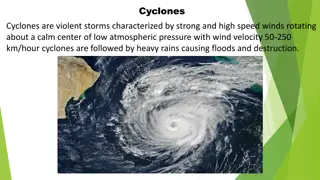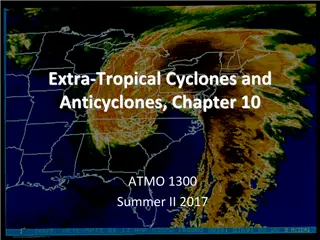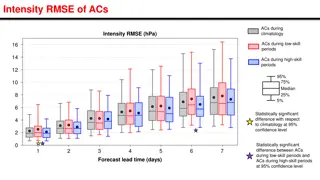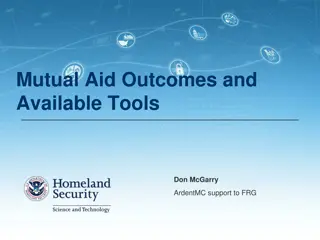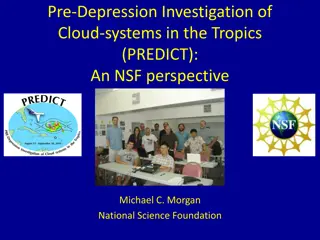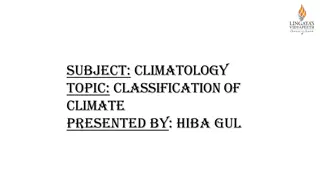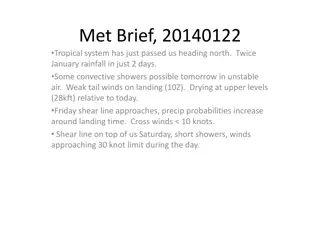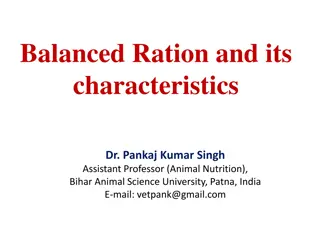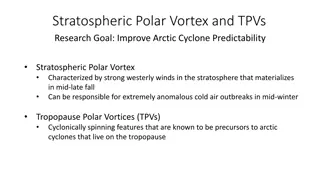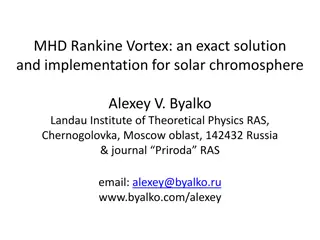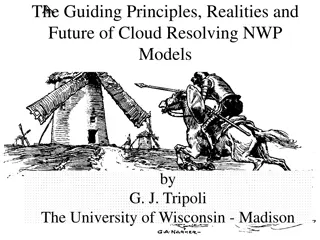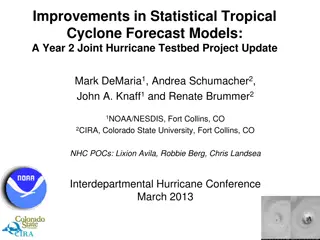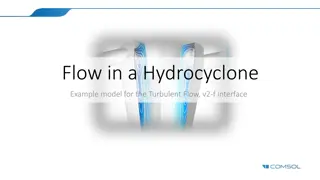Understanding Balanced Vortex Dynamics in Tropical Cyclones
Exploring the application of Potential Vorticity (PV) thinking in understanding tropical cyclones, focusing on Wayne Schubert's contributions to balanced vortex dynamics. The discussion covers the beauty of PV-thinking in relation to baroclinic instability, the analogy between baroclinic wave dynamics and balanced vortex equations, and the insights gained from nonhydrostatic, axisymmetric equations.
- Balanced Vortex Dynamics
- Tropical Cyclones
- Potential Vorticity
- Baroclinic Instability
- Nonhydrostatic Equations
Uploaded on Sep 17, 2024 | 0 Views
Download Presentation

Please find below an Image/Link to download the presentation.
The content on the website is provided AS IS for your information and personal use only. It may not be sold, licensed, or shared on other websites without obtaining consent from the author. Download presentation by click this link. If you encounter any issues during the download, it is possible that the publisher has removed the file from their server.
E N D
Presentation Transcript
PV-Thinking and Tropical Cyclones: Wayne Schubert s Contribution to Balanced Vortex Dynamics Kerry Emanuel Lorenz Center MIT
Main Points What s wrong with comprehensive complexity? The beauty of PV-thinking in understanding baroclinic instability Wayne Schubert s application of PV thinking to tropical cyclones The analogy between surface semigeostrophy for baroclinic wave dynamics and an extension of Wayne s transformed balanced vortex equations for tropical cyclones
Nonhydrostatic, Axisymmetric Equations u t v t u r v r u z v z v r + + = + v c + , u w f D p v u r v r + + = + + , u w f u D v w t w r w z + + = + + , u w c g D p v w z 2 1 r r c ( ) ( ) + + = 0, ru w v v 2 t c z p v s s r s z + + = + , v v v u w D R s t L Density temperature + , v s q v v v c Diffusion of x, Radiation D R p x + conservation of water
Nonhydrostatic, Axisymmetric Equations u t v t u r v r u z v z v r + + = + v c + , u w f D p v u r v r + + = + + , u w f u D v w t w r w z + + = + + , u w c g D p v w z 2 1 r r c ( ) ( ) + + = 0, ru w v v 2 t c z p v s s r s z + + = + , v v v u w D R s t Density temperature L + , v s q v v v c Diffusion of x, Radiation D R p x + conservation of water
Simulation Understanding Comprehensive complexity is no virtue in modelling, but rather an admission of failure -- Ian James
Semi-geostrophy and PV-thinking (after Brian Hoskins) V d V d dt g Geostrophic momentum approximation: dt v g + , X x f Geostrophic coordinates: u g Y y f 1 2 ( ) + + 2 g 2 g u v Rephrasing of geopotential:
Semi-geostrophic Eady Problem: Constant potential vorticity, qg, between two plates 1 f 1 q ( ) + + = 1 Invertibility: XX YY 2 g Conservation of on boundaries: + + = = 0 on Z 0, U V H g g X Y Z All the dynamics collapse to conservation of potential temperature on the two boundaries
Baroclinic Instability Image credit: Kerry Emanuel
Wayne Schubert* extended the semigeostrophic framework to semigradient axisymmetric vortices 1 2 1 2 + = 2 2 fR rV fr M Coordinate transform: R "Potential Radius" 1 g = q Potential vorticity: f Z 3 = R r r Z r r + 2 0 f qR R Invertibility: 2 Z R *Schubert, W. H., and J. J. Hack, 1983: Transformed Eliassen-balanced vortex model. J. Atmos. Sci., 40, 1571-1583.
Eady Analogy Except for their eyes, TCs are nearly zero saturation PV vortices 1 * q f * e g 0 * e Z Neutrality to slantwise moist convection ( ) * e ln d 1 r 1 r ( ) = c T T Invertibility: p b o 2 2 MdM b t e Lower boundary condition: Boundary layer Neglects downdraft flux through PBL top d dM dt + = e e e M dt Surface drag Surface enthalpy flux
Angular momentum and *e from nonhydrostatic, axisymmetric simulation:
As with Eady model, all the dynamics collapses to evolution of e in boundary layer and at tropopause Together with upper boundary condition that assumes that the Richardson Number equals its critical value, one may derive and approximate equation for TC intensification, assuming that the core of the storm is always saturated: V C ( ) = 2 pot 2 max k h V V max 2 C V k pot h = tanh V V max pot 2
Summary Much has been learned about tropical cyclone dynamics through Wayne Schubert s semi-gradient equations Like baroclinic waves, the action in tropical cyclone occurs in the boundary layer and at or near the tropopause, because the interior (saturation) potential vorticity is passive Unlike in baroclinic waves, reversible boundary advection is unimportant compared to surface enthalpy fluxes and drag Supergradient winds in the boundary layer appear to have little effect on the interior flow or on surface winds




